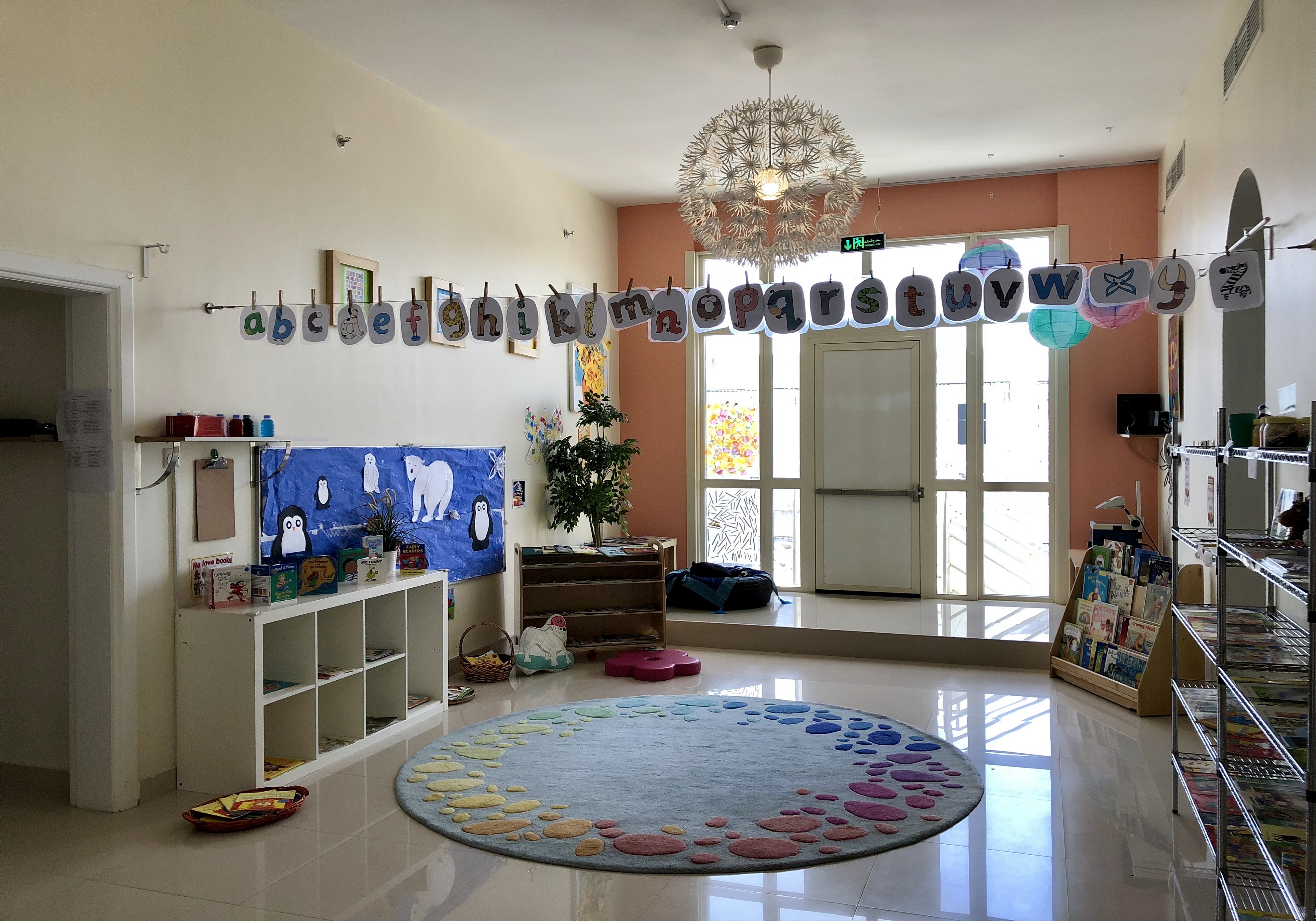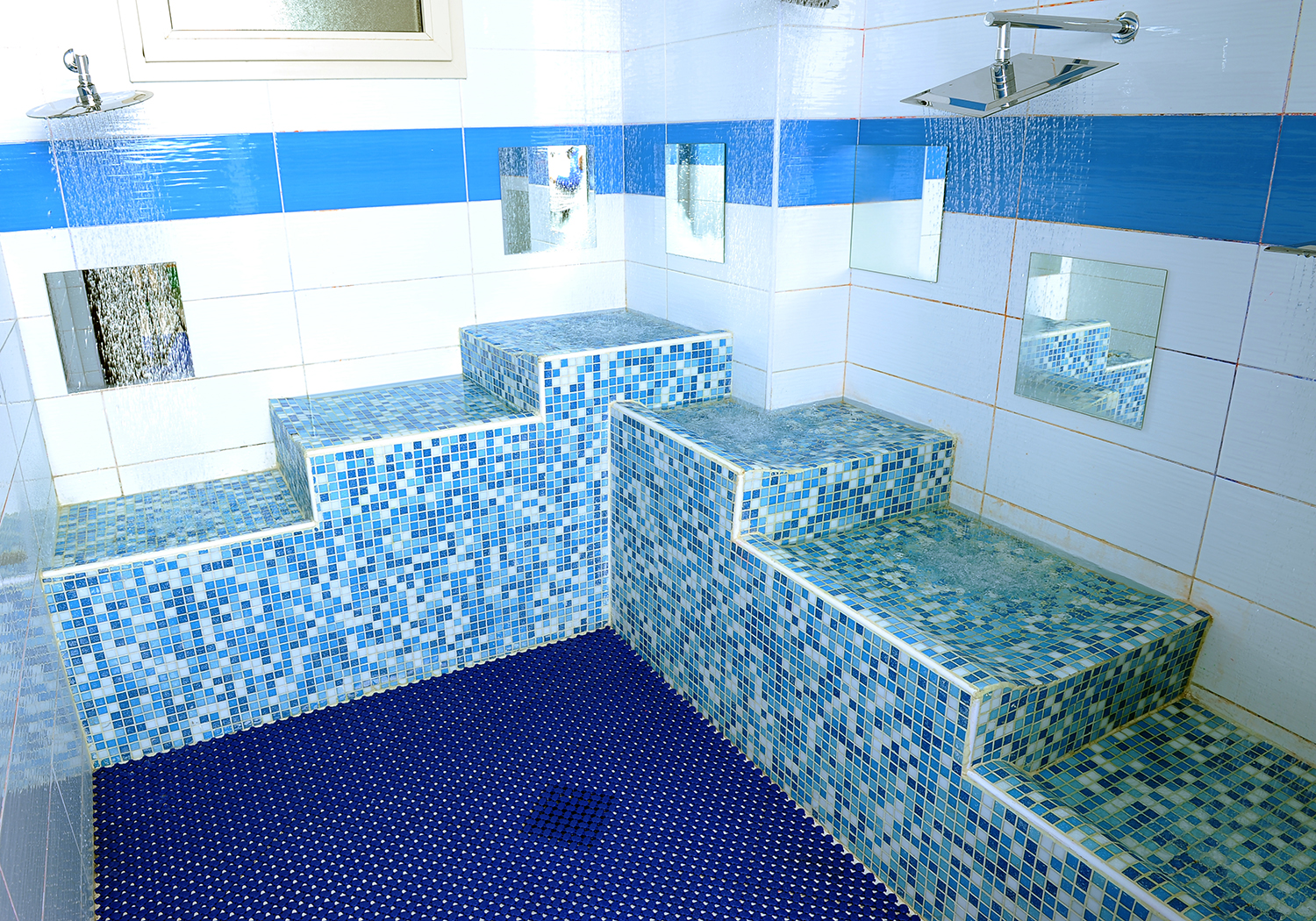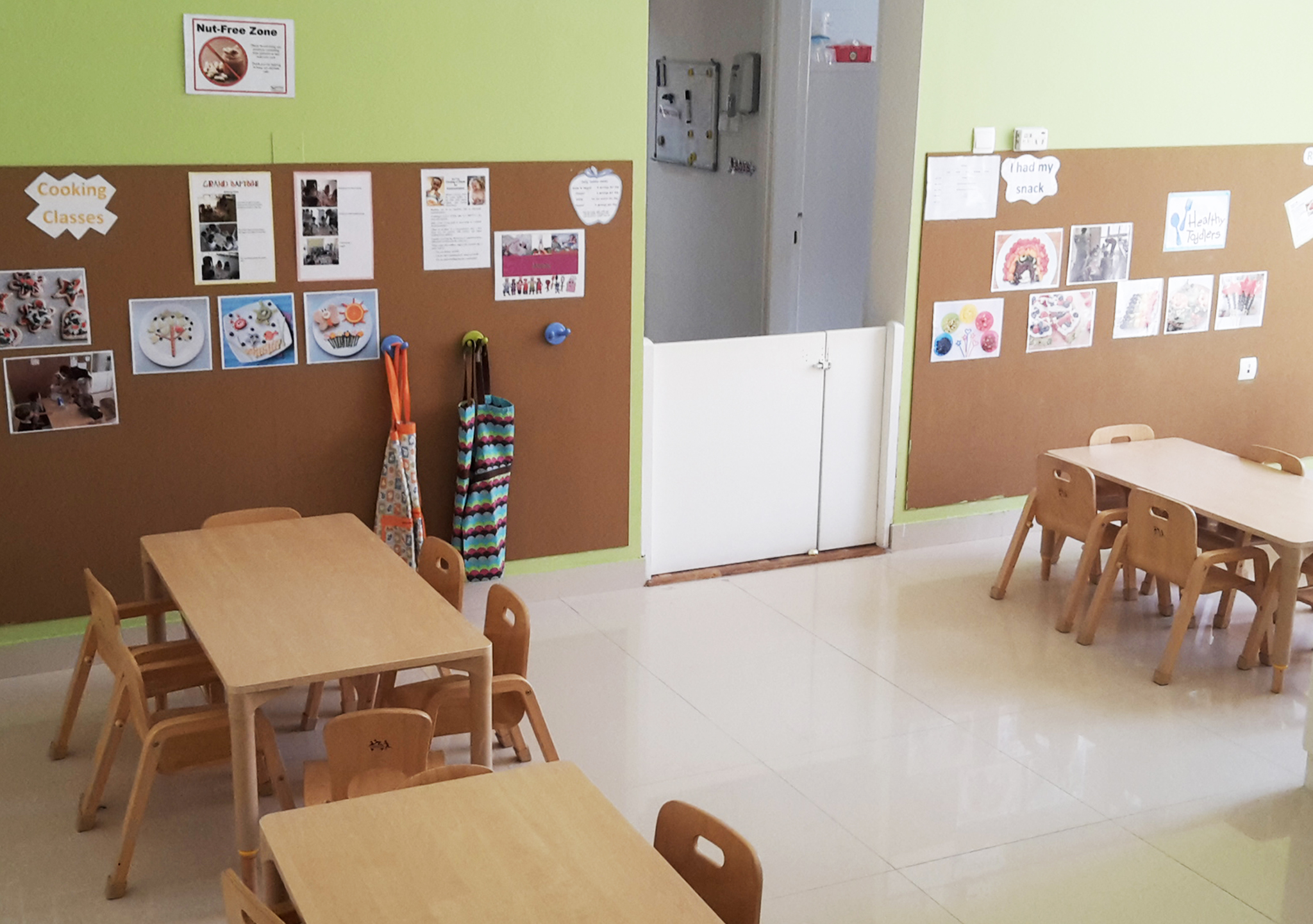Shared Environments
Piazza
A social gathering place
Another important feature is the presence of two central areas called the piazza (town square) on each floor, onto which the main spaces of the classroom face. The piazza is a place of meeting, a public place for our nursery which plays the same role in the nursery as the piazza does in a town. The piazza supports the formation of relationships, in the sense that it fosters encounters, group interaction, stories, social relations, and the children’s assumption of a public identity. In addition, the first floor piazza can be used as an indoor gym.
Library
Reading Room
Learning Spaces Nursery has an Atelier, which translates as studio or laboratory, which is filled with natural materials and art supplies. Each of the classrooms also have mini-ateliers. The Atelierista, who collaborates with the teachers and children, is a specialist in the graphic arts. She helps to plan art projects which come from the children’s own interests. These activities might include helping children learn to express themselves in a new medium, such as clay, drawing, collage, painting, or sculpture as well as incorporating computers and graphic imagery by using software such as photoshop
Aqua Atelier
Indoor Water Playzone
Young children love playing with water and find it relaxing and great fun!
When playing with water children learn:
• to improve their skill at pouring by developing their arm and hand muscles
• how water behaves when you pour it from one container to another
• how water feels and that it can be squirted
• objects either float or sink
• that containers hold the more or less
• that water leaks from containers with holes
• hand eye co-ordination
Dining Room
Food Technology Centre
At Learning Spaces Nursery we have created a Dining Room which allows children to feel at home whilst they eat and drink. We encourage a healthy eating policy within the nursery and will encourage children to try and taste new foods, especially fruits and vegetables. Eating should be a social occasion. Meal times and are an important time for Conversations and Connections; teachers cook and eat with the children and discuss children’s ongoing projects, interests and curiosities. Connections are made across ideas, projects, and interests and between friends.





